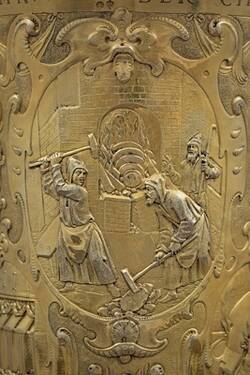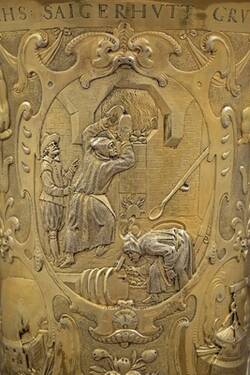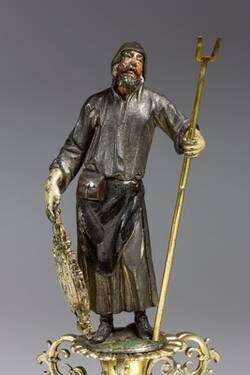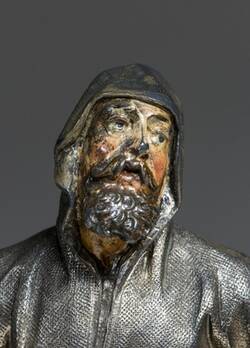The Saiger Works at Grünthal had been owned by the Electors of Saxony since 1567. They were among the largest, most important and most profitable metal works in the whole of Saxony.
It seems that the Electors often paid visits to Grünthal. So an appropriate welcome goblet had to be made. The Dresden court commissioned the Freiberg goldsmith David Winkler to create one in 1625. The Willkomm of the Saigerhütte Grünthal, as it‘s called, is 67 cm tall and is made of silver from the Saiger Works.
Saiger was the process by which black copper and silver were separated. It’s illustrated in the oval reliefs on the sides of the goblet. There you can see six scenes, showing furnaces and typical aspects of the smelting process.
Winkler appears to have been inspired by Gregorius Agricola’s book about mining and metallurgy, De re Metallica. A German translation had been published in 1557. The goblet is crowned with a metalworker, holding a shield displaying the coat-of-arms of the Electors of Saxony. This splendid goblet was kept at the Grünthal smelting Works for fifty-one years. Eventually it ended up in the Green Vault.
Further Media
- Location & Dating
- Freiberg (Saxony), dated 1625
- Material & Technique
- Silver, embossed, cast, chiselled, punched, gilded / remnants of paint: black and incarnate on the crowning figure, green on its base
- Dimenions
- H 67,0 cm, Dm oben 18,0 cm, Dm Fuß 14,5 cm; Gewicht: 2.481 g
- Museum
- Grünes Gewölbe
- Inventory number
- IV 17



